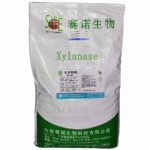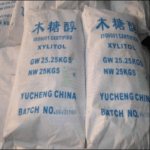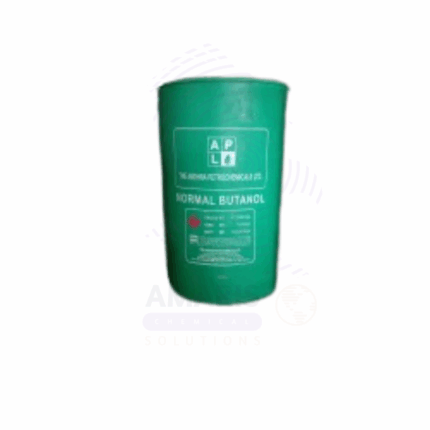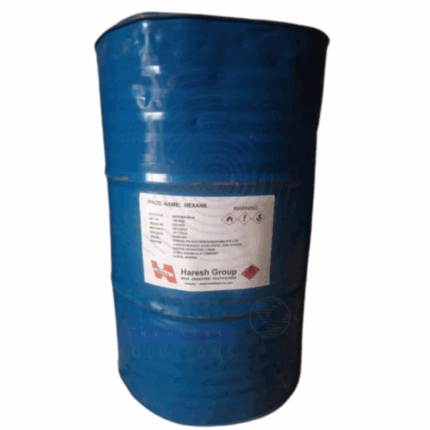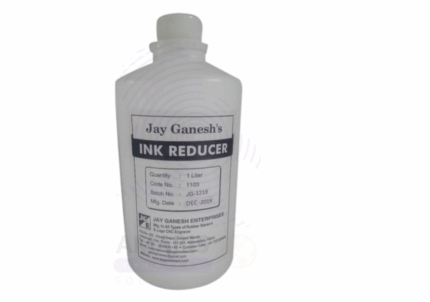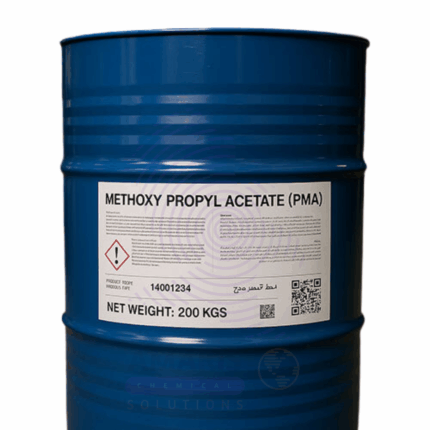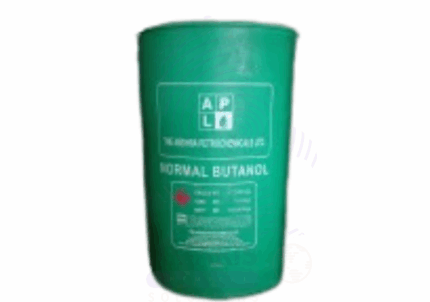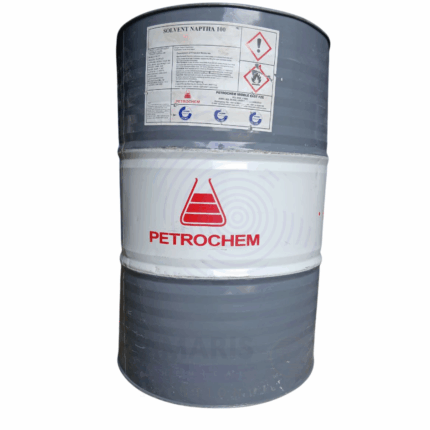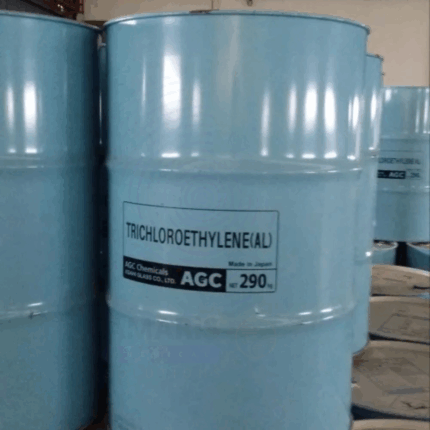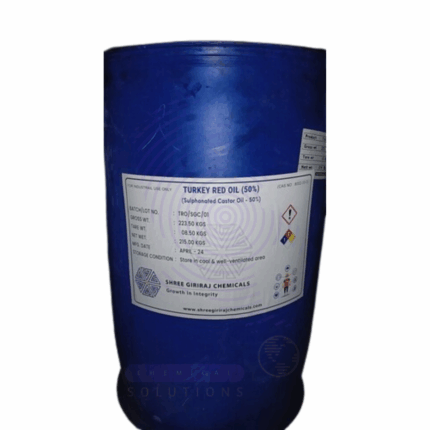Xylene
Whatsapp Order
Xylene is a clear, colorless, flammable aromatic hydrocarbon solvent consisting of three isomers: ortho-, meta-, and para-xylene. It is widely utilized in various industries for its excellent solvency, chemical stability, and moderate evaporation rate. Xylene serves as a key raw material in chemical manufacturing and an effective solvent in coatings, adhesives, inks, and cleaning applications.
Categories: Solvents (Cleaning), Solvents(paint)
Tags: Adhesive formulations, Paint thinner, Rubber & Leather Processing, Varnish Remover, Xylene
Description
Table of Contents
Toggle
Xylene
Primary Uses
- Chemical Industry
- Solvent for Paints, Varnishes, and Coatings: Dissolves resins, polymers, and additives, improving application and drying properties.
- Feedstock in Polyester Production: Used to manufacture terephthalic acid and dimethyl terephthalate, essential intermediates in polyester fiber and plastic production.
- Laboratory & Industrial Cleaning
- Cleaning Agent: Removes grease, oil, and residues from laboratory glassware, metal parts, and equipment surfaces.
- Printing Industry
- Ink Solvent: Provides appropriate viscosity and drying times in printing inks for various substrates.
Secondary Uses
- Pharmaceutical Industry
- Chemical Intermediate: Involved in synthesis pathways of certain pharmaceutical compounds.
- Rubber Industry
- Processing Aid: Incorporated in rubber cement formulations and used for cleaning rubber processing machinery.
- Construction Industry
- Thinner & Degreaser: Used to thin adhesives and coatings and clean tools and surfaces.
KEY PRODUCT FEATURES
1. Basic Identification Attributes
- Chemical Name (IUPAC): Dimethylbenzene
- Common/Trade Name: Xylene
- CAS Number: 1330-20-7
- HS Code: 2902.30.00
- Synonyms: Dimethylbenzene, Xylol
2. Physical & Chemical Properties
- Physical State: Liquid
- Color & Odor: Clear, colorless; sweet aromatic odor
- Boiling Point: 138–144 °C (depending on isomer)
- Flash Point: ~27 °C (closed cup)
- Solubility: Insoluble in water; soluble in alcohol, ether, and other organic solvents
- Density: Approx. 0.87 g/cm³
3. Safety & Hazard Attributes
- GHS Classification: Flammable liquid (Category 3), harmful if inhaled, skin irritant
- Toxicity: Moderate toxicity; prolonged exposure can cause central nervous system effects such as dizziness, headache, and nausea
- Exposure Limits: OSHA PEL: 100 ppm (8-hour TWA), ACGIH TLV: 100 ppm
4. Storage & Handling Attributes
- Storage Conditions: Store in a cool, well-ventilated area away from heat, sparks, open flames, and incompatible substances such as strong oxidizers
- Container Type: Steel drums or tightly sealed containers suitable for flammable liquids
- Shelf Life: Stable for several years if stored properly
- Handling Precautions: Use in well-ventilated areas, avoid inhalation and skin contact, wear protective gloves, goggles, and respiratory protection as needed
5. Regulatory & Compliance Attributes
- Complies with:
- OSHA (Occupational Safety and Health Administration) regulations for workplace safety
- REACH (Registration, Evaluation, Authorisation, and Restriction of Chemicals) in the European Union
- TSCA (Toxic Substances Control Act) inventory requirements in the U.S.
- GHS (Globally Harmonized System) classification for chemical hazards
- Transport Regulations: Classified as a flammable liquid under ADR, IMDG, and DOT regulations (UN No. 1307)
- Manufactured under: Standard industrial chemical manufacturing practices; GMP applicable when used in pharmaceutical or food-grade synthesis contexts
- Environmental Compliance: Meets environmental laws for emissions, discharge, and disposal including EPA standards
- Safety Data Sheet (SDS): Provided in compliance with applicable regulations
6. Environmental & Health Impact
- Biodegradability: Readily biodegradable under aerobic conditions
- Ecotoxicity: Toxic to aquatic organisms; avoid release to waterways
- Bioaccumulation: Potential for bioaccumulation in aquatic organisms
SAFETY HANDLING PRECAUTIONS
Safety Handling Precautions
- PPE Required: Protective gloves, safety goggles, and respirators recommended in confined or poorly ventilated spaces
- Handling Guidelines: Minimize vapour inhalation; avoid static discharge and ignition sources
- Storage Measures: Keep containers tightly closed and away from incompatible materials
First Aid Measures
- Inhalation: Move victim to fresh air immediately; seek medical attention if symptoms persist
- Skin Contact: Wash thoroughly with soap and water; remove contaminated clothing
- Eye Contact: Flush eyes with water for at least 15 minutes; seek medical advice if irritation persists
- Ingestion: Do not induce vomiting; seek immediate medical attention
Firefighting Measures
- Fire Hazards: Highly flammable liquid and vapor; vapors may form explosive mixtures with air
- Extinguishing Media: Use foam, dry chemical powder, or carbon dioxide extinguishers
- Hazardous Combustion Products: Carbon monoxide, carbon dioxide, and other toxic fumes
Related products
Butanol
Butanol (also known as n-Butanol or Normal Butanol) is a clear, colorless liquid with a mild, alcoholic odor. It is a four-carbon primary alcohol with the chemical formula C4H10O. Butanol is moderately soluble in water and miscible with many organic solvents. Its physical and chemical properties make it a versatile solvent and chemical intermediate. Butanol indicates a high purity grade often used in industrial, pharmaceutical, and chemical synthesis applications.
Hexane
Hexane is a colorless, volatile, and highly flammable hydrocarbon solvent belonging to the alkane series with the chemical formula C6H14. It is a mixture of isomers, primarily n-hexane, with a faint gasoline-like odor. Hexane is widely used as an industrial solvent due to its non-polar characteristics, low boiling point, and excellent ability to dissolve oils, fats, waxes, and resins. It is commonly obtained from petroleum refining and is a key component in formulations requiring rapid evaporation and strong solvency. Hexane finds broad applications in chemical synthesis, extraction, cleaning, and manufacturing sectors.
Ink reducer (Ethanol)
Ink reducer (Ethanol) is a volatile, colorless liquid used to adjust the viscosity, flow, and drying time of printing inks. Composed primarily of high-purity ethanol (ethyl alcohol), it acts as a solvent or diluent in various ink systems—particularly in flexographic, gravure, and screen printing. This reducer enhances printability by improving ink transfer, leveling, and penetration into substrates. Ink reducers based on ethanol are fast-drying and widely compatible with alcohol-soluble and water-alcohol hybrid inks used in packaging, label printing, and paper conversion industries.
Methoxy Propyl Acetate
Methoxy Propyl Acetate is a clear, colorless liquid solvent with a mild fruity odor. It is an ester derived from methoxy propanol and acetic acid, widely used in coatings, inks, adhesives, and cleaning products due to its excellent solvency, moderate evaporation rate, and good compatibility with various resins. PMA offers low volatility and strong solvency for a broad range of materials, making it ideal for industrial and commercial applications.
N-Butanol
N-Butanol (1-butanol) is a four-carbon linear alcohol with the chemical formula C₄H₉OH. It is a colorless, flammable liquid with a mild, alcoholic odor. N-Butanol is widely used as a solvent in paints, coatings, adhesives, and chemical synthesis. It serves as an intermediate in the manufacture of plasticizers, butyl acrylate, and other chemicals. Its moderate volatility and solvent properties make it valuable in industrial and commercial applications.
Solvent Naphtha
Solvent Naphtha is a flammable, volatile hydrocarbon mixture derived from petroleum distillation. Characterized by its sharp, petroleum-like odor, it is a clear, colorless to pale yellow liquid. It is a versatile industrial solvent prized for its ability to dissolve oils, fats, resins, and rubber. Its balanced evaporation rate and strong solvency make it a key component in formulations requiring a powerful yet controllable solvent.
Trichloroethylene
Trichloroethylene (TCE) is a clear, non-flammable chlorinated solvent with a sweet, chloroform-like odor. It is widely used as an industrial solvent for degreasing and cleaning metal parts, thanks to its excellent ability to dissolve oils, greases, and waxes. Trichloroethylene is also used as a chemical intermediate and in the manufacture of adhesives, paints, and coatings. Its volatility and solvency make it essential in many manufacturing and maintenance processes, although use is regulated due to environmental and health concerns.
Turkey Red Oil (Sulphated Castor Oil)
Turkey Red Oil (Sulphated Castor Oil), also known as Sulphated Castor Oil, is a water-soluble derivative of castor oil produced by the sulfonation of castor oil. It appears as a viscous, amber to dark brown liquid with excellent emulsifying, detergent, and wetting properties. Turkey Red Oil is widely used as a natural surfactant and emulsifier in various industrial and personal care applications. It is known for its biodegradability, mildness, and ability to stabilize oil-in-water emulsions. Traditionally used in textile processing as a softener and lubricant, it now finds broad usage in cosmetics, detergents, leather processing, and cleaning products due to its unique functional attributes.


 Preservatives(food)
Preservatives(food) Flavor Enhancers
Flavor Enhancers Acidulants
Acidulants Sweeteners
Sweeteners Antioxidants
Antioxidants Colorants(food)
Colorants(food) Nutraceutical Ingredients (food)
Nutraceutical Ingredients (food) Nutrient Supplements
Nutrient Supplements Emulsifiers
Emulsifiers
 Collectors
Collectors Dust Suppressants
Dust Suppressants Explosives and Blasting Agents
Explosives and Blasting Agents Flocculants and Coagulants
Flocculants and Coagulants Frothers
Frothers Leaching Agents
Leaching Agents pH Modifiers
pH Modifiers Precious Metal Extraction Agents
Precious Metal Extraction Agents
 Antioxidants(plastic)
Antioxidants(plastic) Colorants (Pigments, Dyes)
Colorants (Pigments, Dyes) Fillers and Reinforcements
Fillers and Reinforcements Flame Retardants
Flame Retardants Monomers
Monomers Plasticizers
Plasticizers Polymerization Initiators
Polymerization Initiators Stabilizers (UV, Heat)
Stabilizers (UV, Heat)
 Antifoaming Agents
Antifoaming Agents Chelating Agents
Chelating Agents Coagulants and Flocculants
Coagulants and Flocculants Corrosion Inhibitors
Corrosion Inhibitors Disinfectants and Biocides
Disinfectants and Biocides Oxidizing Agents
Oxidizing Agents pH Adjusters
pH Adjusters Scale Inhibitors( water)
Scale Inhibitors( water)
 Antioxidants(cosmetic)
Antioxidants(cosmetic) Emollients
Emollients Fragrances and Essential Oils
Fragrances and Essential Oils Humectants
Humectants Preservatives
Preservatives Surfactants(cosmetic)
Surfactants(cosmetic) Thickeners
Thickeners UV Filters
UV Filters
 Fertilizers
Fertilizers Soil Conditioners
Soil Conditioners Plant Growth Regulators
Plant Growth Regulators Animal Feed Additives
Animal Feed Additives Biostimulants
Biostimulants Pesticides (Herbicides, Insecticides, Fungicides)
Pesticides (Herbicides, Insecticides, Fungicides)
 Active Pharmaceutical Ingredients (APIs)
Active Pharmaceutical Ingredients (APIs) Excipients
Excipients Solvents(pharmaceutical)
Solvents(pharmaceutical) Antibiotics
Antibiotics Antiseptics and Disinfectants
Antiseptics and Disinfectants Vaccine Adjuvants
Vaccine Adjuvants Nutraceutical Ingredients (pharmaceutical)
Nutraceutical Ingredients (pharmaceutical) Analgesics & Antipyretics
Analgesics & Antipyretics
 Analytical Reagents
Analytical Reagents Solvents(lab)
Solvents(lab) Chromatography Chemicals
Chromatography Chemicals Spectroscopy Reagents
Spectroscopy Reagents microbiology-and-cell-culture-reagents
microbiology-and-cell-culture-reagents Molecular Biology Reagents
Molecular Biology Reagents Biochemical Reagents
Biochemical Reagents Inorganic and Organic Standards
Inorganic and Organic Standards Laboratory Safety Chemicals
Laboratory Safety Chemicals Specialty Laboratory Chemicals(Special Laboratory Equipment)
Specialty Laboratory Chemicals(Special Laboratory Equipment)
 Demulsifiers
Demulsifiers Hydraulic Fracturing Fluids
Hydraulic Fracturing Fluids Scale Inhibitors(oil)
Scale Inhibitors(oil) Surfactants(oil)
Surfactants(oil) Drilling Fluids
Drilling Fluids
 Dyes and Pigments
Dyes and Pigments Bleaching Agents
Bleaching Agents Softening Agents
Softening Agents Finishing Agents
Finishing Agents Antistatic Agents
Antistatic Agents
 Admixtures
Admixtures Waterproofing Agents
Waterproofing Agents Sealants and Adhesives
Sealants and Adhesives Curing Compounds
Curing Compounds Concrete Repair Chemicals
Concrete Repair Chemicals Anti-Corrosion Coatings
Anti-Corrosion Coatings
 Surfactants(cleaning)
Surfactants(cleaning) Builders
Builders Enzymes
Enzymes Solvents (Cleaning)
Solvents (Cleaning) Fragrances
Fragrances
 Electronic Chemicals
Electronic Chemicals Catalysts
Catalysts Lubricants
Lubricants Photographic Chemicals
Photographic Chemicals Refrigerants
Refrigerants Automotive chemicals
Automotive chemicals Pyrotechnic Chemicals
Pyrotechnic Chemicals
 Biodegradable Surfactants
Biodegradable Surfactants Bio-based Solvents
Bio-based Solvents Renewable Polymers
Renewable Polymers Carbon Capture Chemicals
Carbon Capture Chemicals Wastewater Treatment Chemicals
Wastewater Treatment Chemicals
 Pigments
Pigments Solvents(paint)
Solvents(paint) Specialty Coatings
Specialty Coatings Binders/Resins
Binders/Resins Additives
Additives Driers
Driers Anti-Corrosion Agents
Anti-Corrosion Agents Functional Coatings
Functional Coatings Application-Specific Coatings
Application-Specific Coatings
 Fresh Herbs
Fresh Herbs Ground Spices
Ground Spices Whole Spices
Whole Spices Spice Blends
Spice Blends Dried Herbs
Dried Herbs
 Leavening Agents
Leavening Agents Dough Conditioners
Dough Conditioners Flour Treatments
Flour Treatments Fat Replacers
Fat Replacers Decoratives
Decoratives Preservatives(baking)
Preservatives(baking)
 Plasticizers & Softeners
Plasticizers & Softeners Reinforcing Agents
Reinforcing Agents Adhesion Promoters
Adhesion Promoters Vulcanizing Agents
Vulcanizing Agents Antidegradants
Antidegradants Blowing Agents
Blowing Agents Fillers & Extenders
Fillers & Extenders Accelerators & Retarders
Accelerators & Retarders
